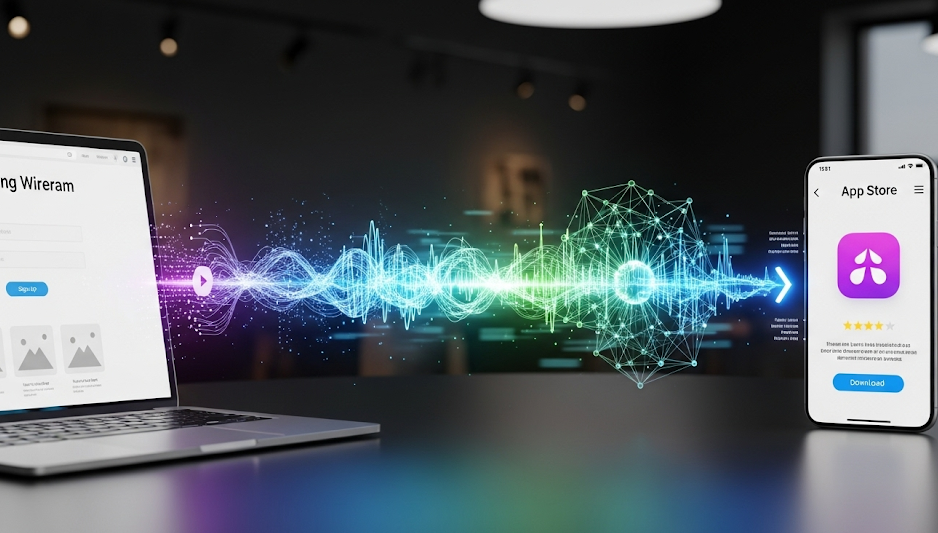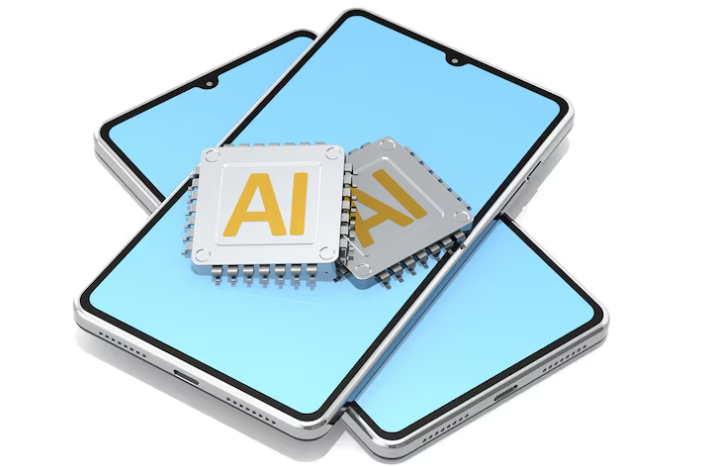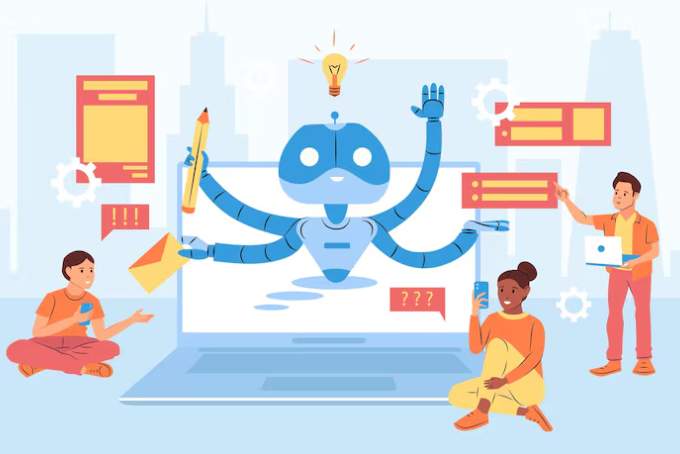Welcome to the Future: Understanding AI-First Development

The Dawn of AI-First: Why Now is the Time for Intelligent Development
The landscape of application building has been dramatically reshaped. We are witnessing the true dawn of AI-First development. Why is now the perfect time for intelligent development? Recent breakthroughs in machine learning, coupled with vastly improved computational power and accessible tools like OpenAI’s APIs and GitHub Copilot, have democratized powerful AI. “Developers no longer need to be AI experts to integrate sophisticated intelligence into their products,” making advanced features accessible to all.
This convergence means building smarter applications is no longer a luxury, but a strategic imperative. From generating initial code to optimizing user experiences, AI-powered tools significantly accelerate the entire app store journey. Businesses embracing an AI-First approach gain a formidable competitive edge. They deliver innovative solutions faster and more efficiently. This isn’t just an option; “it’s becoming the new standard for modern, impactful software creation.”
Launch Your App Today
Ready to launch? Skip the tech stress. Describe, Build, Launch in three simple steps.
BuildDefining ‘AI-First’: Beyond Just Using AI Tools in Your Workflow
Many developers now integrate various AI tools into their daily work. They might generate boilerplate code with GitHub Copilot, for instance. Or they might craft marketing copy and brainstorm ideas using ChatGPT. While these AI utilities significantly boost productivity, this practice alone does not embody an AI-first approach. This is merely being “AI-assisted” – enhancing existing processes rather than redefining them. “Understanding this crucial distinction is vital for moving beyond incremental gains to truly transformative innovation.”
An AI-first strategy fundamentally re-imagines an application’s design. Artificial intelligence sits at its core from inception. AI is not an add-on or a mere feature. Instead, it acts as the indispensable engine driving key functionalities. It profoundly shapes the entire application development process. “It means building products whose value proposition and user experience are inherently dependent on intelligent algorithms.” Consider modern tools leveraging AI for personalized learning paths or dynamic content generation. AI-first development embeds artificial intelligence into the very DNA of the product, creating unique capabilities impossible without it.
The Vision: From Idea Validation on a Landing Page to a Full-Fledged App
Traditionally, transforming a promising app idea into a tangible product has been a time-consuming and often risky endeavor. Our vision pioneers an AI-first approach where the journey begins with rapid idea validation on a simple landing page. This initial step is crucial: it’s about quickly testing your core concept, gathering real user interest, and collecting valuable feedback *before* any significant development investment. “This proactive validation minimizes risk and maximizes potential, ensuring you build what people truly want.” It’s a strategic shift from speculative building to data-driven creation, powered by intelligent analysis.
Once an idea demonstrates clear market demand, AI takes the reins for the heavy lifting. Instead of lengthy manual coding, AI-first development tools leverage these validated insights to generate code, design intuitive user interfaces, and even establish the necessary backend infrastructure. This smart automation drastically accelerates the development process, significantly reducing both time and cost. “The result is a seamlessly developed, full-fledged app that moves from a proven concept directly to the App Store, ready for eager users.” This efficiency fundamentally reshapes how applications are brought to life.
Laying the Groundwork: AI for Insight, Validation, and Design

Leveraging Your Landing Page: Gathering Core Insights with AI Assistance
Your landing page serves as a crucial data laboratory, far more than just an advertisement. Before any code is written, AI tools meticulously analyze how visitors interact with your preliminary concept. They process detailed data from heatmaps, scroll depth, and click-tracking. This reveals exactly what resonates most with potential users. For example, AI can highlight which proposed features attract the most attention or pinpoint specific areas of confusion. “This initial data profoundly shapes your app idea, ensuring it addresses real market needs and critical user pain points.”
Beyond basic analytics, AI provides deeper insights into user intent and preferences. It leverages natural language processing (NLP) to sift through early feedback forms and comments efficiently. Sentiment analysis then identifies common positive or negative themes. This clearly reveals what users truly desire or dislike in your proposed app. This robust AI assistance helps validate your core concept. It also decisively prioritizes essential functionalities for the application. “Leveraging AI assistance transforms raw landing page data into actionable development strategies for building applications from your initial landing page.”
Smart Start: AI-Driven Market Research and User Persona Generation
Gone are the days of arduous, manual market analysis. AI-powered tools now swiftly process vast amounts of data, revolutionizing how we understand the market. They scrutinize global market trends, analyze competitor strategies, and sift through countless online reviews and social media discussions. This sophisticated analysis provides developers an immediate, data-backed understanding of the market landscape. “Imagine identifying a significant niche market gap or emerging user need in mere minutes, not weeks.” This accelerated AI-driven market research is absolutely crucial for validating product ideas early and making informed decisions.
Building directly on this robust market research, AI excels at user persona generation. It synthesizes diverse data points like demographic information, online behavioral patterns, and psychographic insights. This technology creates incredibly detailed, realistic profiles of your ideal target users. These AI-generated personas go beyond basic demographics, outlining specific pain points, core motivations, and preferred application features. “Understanding your users deeply is paramount for designing truly resonant applications that genuinely solve problems.” This ensures every development effort aligns with real human needs and desires.
Designing with Intelligence: AI-Assisted UI/UX Prototyping and Iteration
AI revolutionizes the design phase, moving beyond manual mockups. AI-assisted UI/UX prototyping tools can swiftly translate validated ideas and textual requirements into initial wireframes and high-fidelity mockups. Imagine describing a feature, and AI generates several layout options instantly. These intelligent platforms often integrate best practices and leverage vast datasets of successful interfaces. “This significantly accelerates the creation of first drafts, ensuring early visual consistency and adherence to established design systems.” Designers can then focus on refining these intelligent starting points, rather than building from scratch.
This smart assistance extends powerfully into the UI/UX iteration process. AI tools analyze user behavior, feedback, and engagement metrics to identify design pain points or areas for improvement. For example, AI can highlight confusing navigation paths or underperforming call-to-action buttons. “It can even suggest alternative design variations for A/B testing, providing data-driven recommendations to optimize user journeys.” This iterative, intelligent loop helps designers continuously refine the application, ensuring it is not just aesthetically pleasing but also highly intuitive and effective for the target audience.
Building Smarter, Not Harder: AI in Core Application Development

Coding the Future: How AI Assists in Generating and Optimizing Code
AI is revolutionizing how we write code. Tools like GitHub Copilot act as intelligent pair programmers, anticipating needs. They suggest entire lines or even complex functions as you type, significantly accelerating development. This frees developers to concentrate on innovative logic, not repetitive boilerplate. AI-powered code generation helps eliminate common syntax errors early on. It also ensures adherence to best practices, boosting consistency across projects. “This makes the initial coding phase remarkably efficient and less error-prone.”
Beyond creation, AI excels at code optimization. AI tools deeply analyze existing code for potential improvements. They pinpoint performance bottlenecks, security vulnerabilities, and inefficient algorithms. These systems can suggest cleaner, more efficient ways to structure your application’s architecture. This directly reduces resource consumption and vastly improves app responsiveness. AI helps refactor code, ensuring it remains robust, scalable, and easier to maintain. “Ultimately, AI delivers higher-quality, more performant applications with less manual effort.”
Automating Quality: AI for Proactive Testing and Debugging
AI is revolutionizing how we ensure application quality. Traditional testing can be slow and often reactive. Now, AI-powered testing tools proactively analyze code for potential vulnerabilities. They identify errors *before* these become major issues. These systems learn from vast codebases. They predict where bugs are likely to emerge. They can even automatically generate comprehensive test cases. This covers edge scenarios human testers might overlook. “This proactive approach drastically reduces the number of bugs reaching later development stages.” For instance, tools like Snyk (formerly DeepCode) use AI for real-time code analysis, identifying subtle flaws instantly.
Beyond prevention, AI significantly streamlines the debugging process. When a bug does surface, AI for debugging solutions swiftly pinpoint the root cause. They analyze error logs, stack traces, and code changes. Then they suggest precise fixes. This intelligent assistance accelerates problem-solving. It lets developers focus on innovation, not tedious error hunting. “Leveraging AI in this way means fewer hours spent on fixes and more time building new features, leading to incredibly faster development cycles.” This ensures a more robust and reliable application, from the initial idea right to the App Store.
Seamless Integration: Blending AI Tools with Your Existing Development Stack
Integrating AI into your current development workflow is surprisingly straightforward. You don’t need to dismantle your existing setup. Instead, modern AI tools are designed for seamless integration. They often come with well-documented APIs (Application Programming Interfaces) and SDKs (Software Development Kits). These allow you to “plug in” AI functionalities without rebuilding everything. Think of adding an intelligent layer to your familiar environment. “This approach significantly reduces the learning curve and time-to-value for development teams.”
Many teams already leverage cloud-based AI services. Providers like AWS, Google Cloud, and Microsoft Azure offer these. These platforms provide pre-trained models and customizable AI tools. They fit perfectly into existing CI/CD pipelines. Tools like GitHub Copilot, for instance, assist developers directly within their IDEs. They generate helpful code snippets. Integrating AI means enhancing your testing processes with AI-driven defect prediction. It also optimizes deployment with intelligent monitoring. This leads to more efficient development cycles and higher quality applications.
The Intelligent Core: Weaving AI into Your App’s Features

Beyond the Workflow: Embedding AI for Smart App Functionality
Moving beyond mere workflow automation, truly intelligent applications embed AI-powered capabilities deeply into their core. Your app shifts from merely *responding* to user input to proactively anticipating needs. “This deeper integration transforms a good app into an indispensable resource.” It delivers smart app functionality that feels remarkably intuitive for every user. The application learns from user data. It then adapts, offering dynamic and evolving experiences.
Imagine a media streaming app. It uses predictive analytics to suggest films you will love, often before you even realize it. A personal finance app might employ intelligent recommendations. It could flag potential overspending trends, helping you manage your budget better. Even subtle natural language processing (NLP) empowers apps. It helps them understand complex queries, making search incredibly powerful and user-friendly. This pervasive AI isn’t optional. It fundamentally redefines user interaction and value.
Personalization & Prediction: Elevating User Experience with AI-Powered Features
AI-powered features revolutionize how users interact with applications. They move beyond generic interfaces to create truly unique journeys for each individual. Think of AI-powered personalization in platforms like Netflix or Spotify. These services meticulously analyze your viewing or listening habits to recommend content you’ll genuinely love, often surprising you with perfect suggestions. “This level of tailored content makes users feel understood and significantly boosts engagement.” It transforms a simple app into a highly relevant, personal assistant, fostering deeper user loyalty.
Beyond just personalizing, AI excels at predictive capabilities. It anticipates user needs before they even articulate them, offering seamless, proactive assistance. For instance, e-commerce giants like Amazon use predictive AI to suggest products you might want, often before you search for them. Similarly, smart assistants can predict your next question or task based on your daily routines and past interactions. “Proactive assistance streamlines workflows and dramatically enhances overall user satisfaction,” making the application feel incredibly intuitive and intelligent.
Navigating the Ethical Landscape: Responsibility in AI Feature Integration
Integrating AI features into your app demands profound ethical responsibility. Developers must actively address potential pitfalls from the start. A major concern is AI bias. Algorithms can perpetuate societal prejudices from their training data. This leads to unfair or discriminatory user outcomes. Consider recommendation engines, which might inadvertently exclude certain demographics. “Ensuring fairness and preventing bias in your AI is a fundamental obligation, not just an option.” We must also prioritize transparency. Users deserve to understand when and how AI impacts their experience. Clearly communicating AI’s role builds essential trust.
Data privacy is another cornerstone of ethical AI integration. AI models often process vast amounts of user information. Thus, robust security measures are paramount to protect sensitive data. Companies must diligently secure user information, adhering to regulations like GDPR or CCPA. Furthermore, informed consent is crucial. Users should explicitly agree to how AI collects and uses their data. This builds crucial confidence. “Ongoing monitoring of AI performance helps catch and correct any unintended consequences swiftly.” It ensures your AI remains aligned with ethical guidelines. Prioritizing these principles secures user trust and fosters a responsible app ecosystem.
Launch, Learn, and Evolve: AI for Deployment and Continuous Growth

Seamless Launch: AI-Optimized Deployment Strategies and Resource Management
Launching your application is a pivotal moment, and AI-optimized deployment strategies ensure a smooth, error-free transition. AI analyzes your app’s architecture, dependencies, and anticipated user load. It then intelligently recommends the most efficient cloud infrastructure, whether it’s AWS, Azure, or Google Cloud. AI-driven CI/CD pipelines automate crucial steps like testing and integration, vastly reducing manual errors and accelerating release cycles. “This predictive capability identifies potential bottlenecks *before* launch, ensuring your app is ready for prime time.” This significantly speeds up your time-to-market.
Beyond the initial release, AI proves invaluable for resource management. It continuously monitors your live application’s performance and real-time user traffic patterns. Using predictive analytics, AI can anticipate spikes or dips in demand. This enables dynamic scaling, automatically adjusting server capacity up or down as needed. For example, AI can provision more resources during peak usage and scale back during quieter periods. “This intelligent resource allocation drastically optimizes operational costs and guarantees consistent peak performance for all users.”
Learning and Iterating: AI-Powered Analytics for Post-Launch Optimization
After an application launches, the true learning phase begins. AI-powered analytics are indispensable tools here. They go beyond simple dashboards. These systems actively monitor user behavior in real-time. They quickly identify subtle patterns. AI can pinpoint where users might struggle or features they love. For instance, AI analyzes user sessions to map complete journeys. This reveals crucial drop-off points or unexpected navigation paths. “This deep understanding of user interaction is vital for post-launch success.”
This powerful data helps developers move from raw numbers to actionable insights. AI can predict user churn before it happens. It can also suggest personalized recommendations, similar to how Netflix refines user viewing suggestions. This allows teams to iterate rapidly. They focus on optimizing specific parts of the app. This could be refining onboarding flows or enhancing core features. Every update becomes a data-driven improvement. This ensures the application continuously evolves to meet user needs.
The Future is Now: AI in Continuous Integration, Delivery, and Innovation
AI is already transforming Continuous Integration (CI) and Continuous Delivery (CD). AI-powered tools automate code reviews, identifying potential bugs and suggesting improvements. For example, platforms like GitHub Copilot assist developers in real-time, enhancing code quality and accelerating development. AI-powered testing frameworks perform comprehensive checks much faster than manual methods. This means developers integrate changes more frequently. This automation leads to faster releases and significantly fewer post-deployment bugs. It boosts efficiency and speeds up the release cycle.
Beyond just deployment, AI fuels continuous innovation. It meticulously analyzes vast amounts of user behavior and feedback data. This helps teams identify unmet needs or emerging trends instantly. AI also optimizes A/B tests, ensuring you roll out features that truly resonate with users. Furthermore, it can predict potential system issues before they impact performance. “AI offers unparalleled insights, guiding feature development and product roadmaps with data-driven precision.” This proactive approach ensures your application dynamically adapts, staying competitive and always relevant.
Launch Your App Today
Ready to launch? Skip the tech stress. Describe, Build, Launch in three simple steps.
Build





